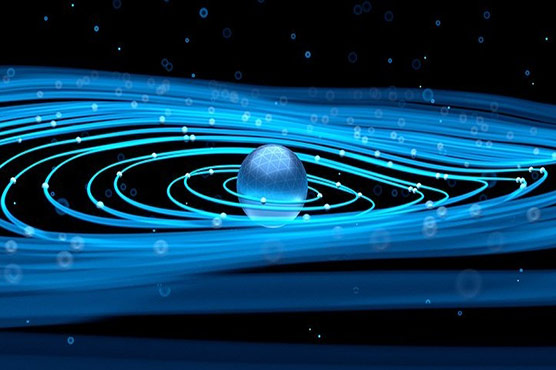Scientists create 'fastest spinning object' to measure quantum forces inside 'nothingness'

Researchers are now comfortable with the fact that empty space isn't empty at all.
(Web Desk) – Scientists have created the fastest spinning object ever made, taking them a big step closer to being able to measure the mysterious quantum forces at play inside ‘nothingness’.
The record-breaking object in question is a tiny piece of silica, capable of whipping around billions of times per second - creating sufficient sensitivity that the team think they’ll be able to use it to detect unfathomably small amounts of drag caused by the ‘friction’ within a vacuum.
The science of nothingness is quickly becoming a big deal in physics, as we strive to understand how the universe operates at its very foundations.
Researchers are now comfortable with the fact that empty space isn’t empty at all - it’s actually full of quantum fluctuations that we’re only just now learning how to detect. But we’re still struggling to find tools sensitive enough to measure these tiny forces at play.
Several years ago, researchers from the Purdue University in the U.S. took a step forward by developing a method for measuring the torque – or twisting force – acting on a tiny oblong piece of diamond.
By using a laser to suspend the material in a vacuum, physicists had an incredibly finely-tuned device for working out the gentle nudge of surrounding fields.
"A change of the orientation of the nanodiamond caused the polarisation of the laser beam to twist," physicist Tongcang Li explained in 2016.
"Torsion balances have played historic roles in the development of modern physics. Now, an optically levitated ellipsoidal nanodiamond in a vacuum provides a new nanoscale torsion balance that will be many times more sensitive."
Three years later, Li and his team have replaced the diamond with tiny balls of silica just 150 nanometres in diameter, which were held aloft inside a vacuum chamber with a 500 milliwatt laser.
Using polarised pulses from a second laser, the tiny silica blobs could be set spinning.
And spin they did, with the dumbbell-shaped particles reaching an astonishing 300 billion rpm, breaking the limits on previous attempts which barely managed one fifth of that speed.
Revolutions aside, it was the sensitivity of the rotation’s forces that the researchers were aiming to improve upon.
While this experiment relies on modern technology, it’s has its roots in an experiment that’s centuries old.
At the end of the 18th century, British scientist Henry Cavendish set out to put hard figures to Newton’s laws on gravity by attempting to measure the force using two pairs of lead weights.
Two relatively light lead spheres balanced on either end of a 1.8-metre-wide beam were hung from a wire near a second pair of heavy masses locked in place. A measure of the torsion on the wire provided the first real measure of a gravitational constant.
This new, nanosized version of Cavendish’s experiment could be so sensitive, it could theoretically be used to measure the faint tugging of electromagnetic fields that creates a kind of friction in empty space, formed by the inherent uncertainty of quantum physics.
"A fast-rotating neutral nanoparticle can convert quantum and thermal vacuum fluctuations to radiation emission," the researchers write in their report.
"Because of this, the electromagnetic vacuum behaves like a complex fluid and will exert a frictional torque on a nanorotor."
Twisting force of torsion is measured in units called ‘newton metres’, where one newton metre is a newton of force applied to a point of leverage from one metre away.
An experiment in 2016 developed a method that could measure torque as sensitive as around 3 x 10^-24 newton metres, a process that required temperatures just a fraction of a degree above absolute zero.
Li and his team blitzed this previous record as well, comparing the way the silica blobs spun between laser cycles to come up with torque measurements of just 1.2 x 10^-27 Newton metres. At room temperature too, no less.
In the future, experiments varying the make-up of the spinning material as well as environmental factors such as temperature and objects in the vicinity, could be used to finally measure how undisturbed quantum fields bubble away at the lowest energies.
This research was published in Nature Nanotechnology.

